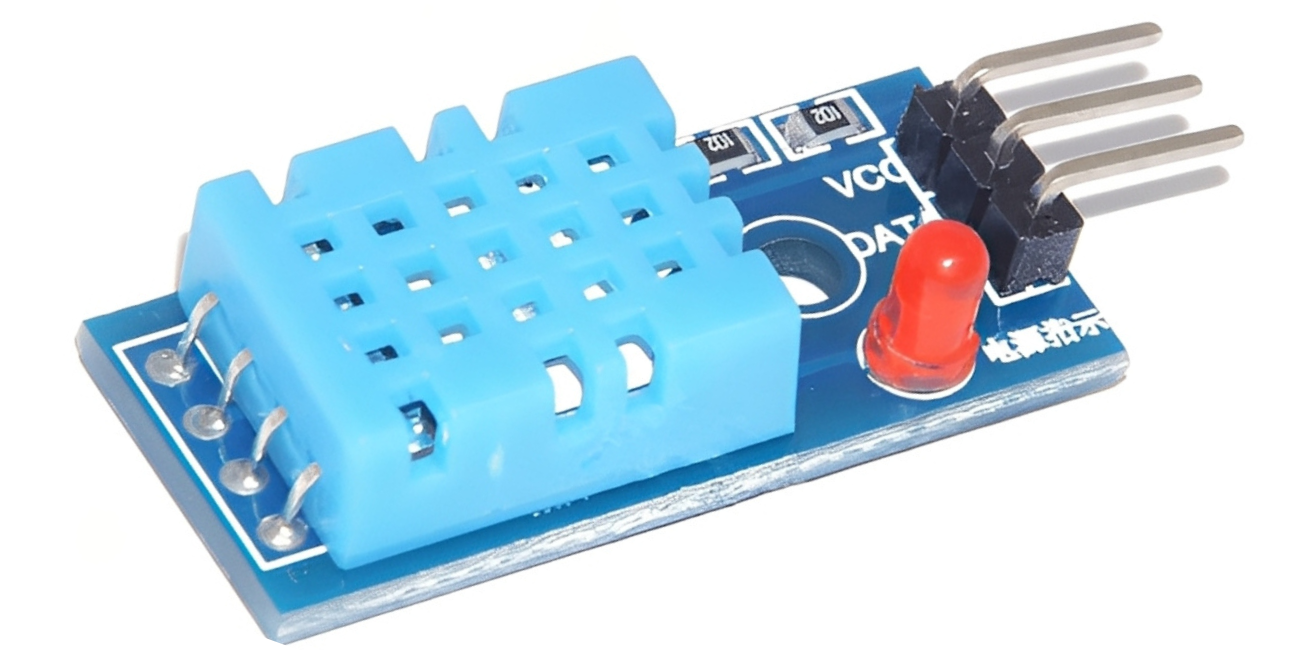
DSM Online Support
Support Master
Welcome to DSM Online
How can I help you today
How can we assist you? please let us know the support you need from DSM Online

When venturing into the world of Internet of Things (IoT) or basic home automation, one of the first environmental parameters you'll want to measure is the climate. This is where the DHT11 Temperature and Humidity Sensor Module truly shines. It is the ultra-low-cost, easy-to-use component that has become the entry-level standard for makers using platforms like Arduino and Raspberry Pi.
If you’re looking to build your first weather station, a simple incubator monitor, or just a basic home climate display, the DHT11 sensor is the perfect starting point. It offers a balanced combination of functionality and simplicity, making it the most popular choice for DIY electronics projects where budget and ease of use are key priorities.
The DHT11 is an integrated sensor that combines two sensing elements: a resistive-type humidity sensor and an NTC thermistor for temperature measurement. It converts these analog measurements into a clean, digital signal, simplifying the connection process immensely.
Here’s a quick look at what the DHT11 module offers:
Temperature Range: $0^\circ\text{C}$ to $50^\circ\text{C}$
Temperature Accuracy: $\pm 2^\circ\text{C}$
Humidity Range: $20\%$ to $90\%$ RH
Humidity Accuracy: $\pm 5\%$ RH
Sampling Rate: $1 \text{Hz}$ (one reading per second)
While its accuracy is moderate compared to its more expensive counterpart (the DHT22), the DHT11 is more than adequate for basic home climate monitoring, student projects, and applications in typical indoor environments.
One of the DHT11’s greatest strengths is its simplicity. The module typically comes with three pins: VCC (power), GND (ground), and Data.
Easy Wiring: It only requires a single digital pin on your microcontroller to send and receive all the temperature and humidity data. This saves valuable GPIO pins for other components.
Digital Output: The sensor handles the conversion from analog to digital internally. When your microcontroller sends a simple request signal, the DHT11 responds with a 40-bit data packet containing the humidity and temperature values. This digital output eliminates the noise and complexity often associated with reading analog sensors.
For this reason, the DHT11 Arduino connection is exceptionally straightforward, often working instantly when paired with popular, well-supported libraries.
Due to its low power consumption and low cost, the DHT11 temperature humidity sensor is ideal for:
Basic Weather Stations: Creating a simple device that logs current temperature and humidity indoors.
Educational Projects: Serving as a great, reliable component for teaching basic sensor interfacing and single-wire protocols in classrooms.
Hobbyist Prototyping: Rapidly developing concepts for simple environmental control without significant investment.
Simple Control Loops: Triggering a fan or dehumidifier when the humidity crosses a predefined threshold.
Most pre-packaged DHT11 sensor modules come with the required pull-up resistor and filtering capacitor built onto the board. This "module" form makes the setup truly plug-and-play. Simply connect VCC to $5\text{V}$ (or $3.3\text{V}$), GND to ground, and the Data pin to any digital input pin on your Arduino.
The final step is to use a community-developed DHT library. These libraries handle the complex timing required by the sensor's single-wire protocol, allowing your code to retrieve clean temperature and humidity values with just a single function call.
The DHT11 Temperature and Humidity Sensor Module is the perfect gateway into environmental sensing. It provides reliable, functional data at an unbeatable price point. For beginners and projects that don't require industrial-grade precision, this compact and low-cost sensor is the go-to component for bringing real-world climate data into your digital creations.